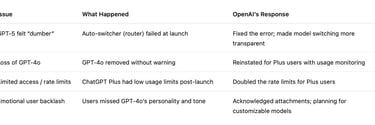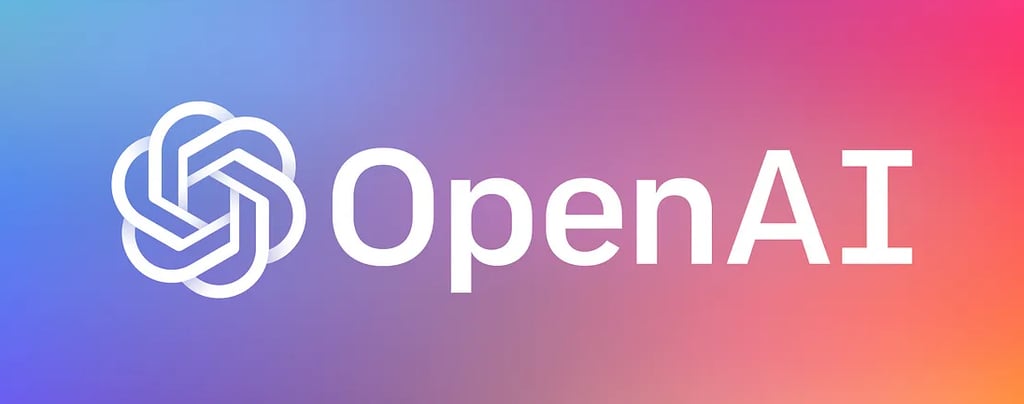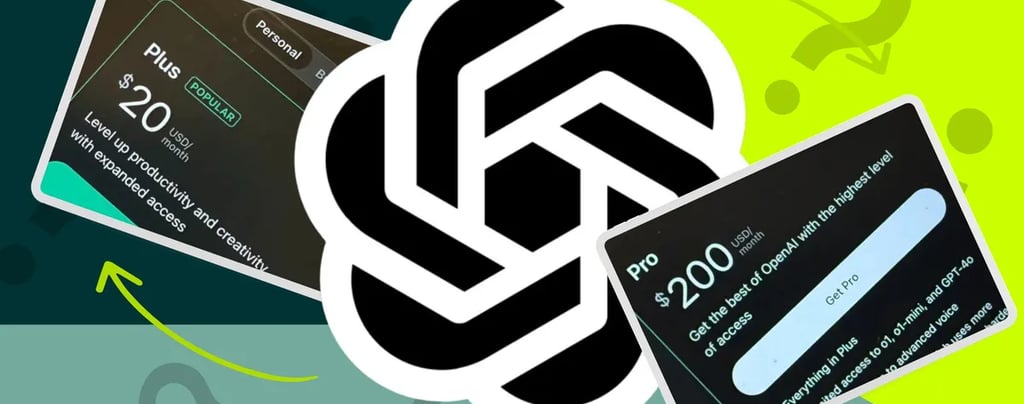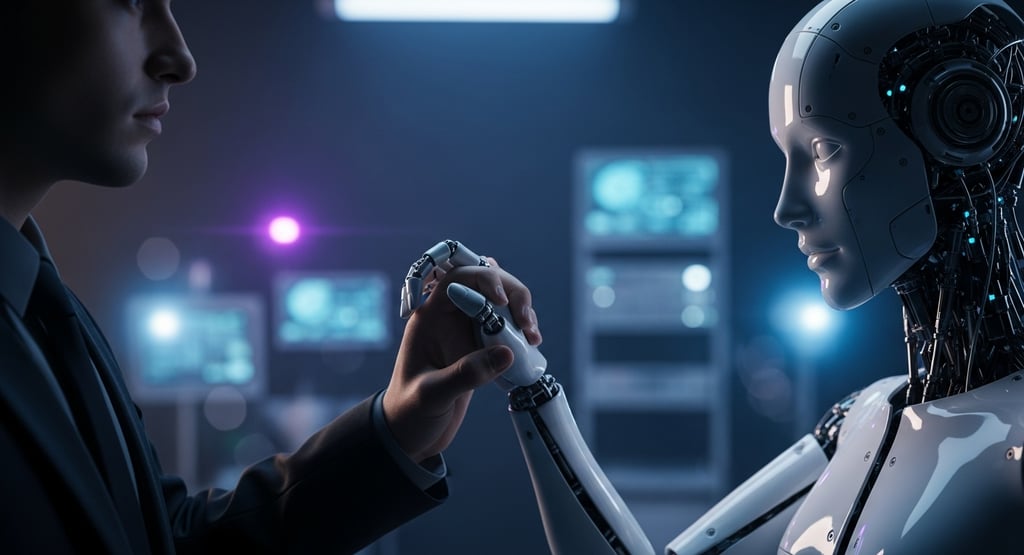Mixed Reactions to OpenAI's GPT-5 Launch
The launch of OpenAI's GPT-5 on August 7, 2025, elicited mixed reactions from users. Many reported that the AI model felt less intelligent, with shorter and less engaging responses compared to its predecessor, GPT-4, raising concerns about its personality and effectiveness.
WHAT'S NEXT IN AI?
8/19/20252 min read


“Way Dumber”? A Technical Glitch Behind the Perception
CEO Sam Altman quickly addressed the concerns, explaining that the unified real-time router—GPT‑5’s auto-switching mechanism—malfunctioned during the launch, preventing the model from choosing the best mode to respond optimally, which made it feel “way dumber” on that first day.
Bringing Back GPT-4o—But Only for Plus Users
With backlash mounting, Altman moved to reinstate GPT‑4o, but exclusively for ChatGPT Plus subscribers. He pledged to monitor usage closely to decide how long legacy access would continue.
Rate Limits Doubled for Plus Subscribers
With backlash mounting, Altman moved to reinstate GPT‑4o, but exclusively for ChatGPT Plus subscribers. He pledged to monitor usage closely to decide how long legacy access would continue.
What It All Means
OpenAI’s swift damage control efforts show a willingness to listen to user feedback, even on emotional grounds. While GPT-5 delivers stronger technical performance, OpenAI appears to recognize that personality, tone, and flexibility are equally important in maintaining user trust and satisfaction. The restoration of GPT-4o and rate-limit adjustments signal a more balanced approach, blending innovation with empathy.
Acknowledging Emotional Attachments
Altman also recognized the emotional ties users had developed with GPT‑4o—some even described it as a friend. He admitted they had underestimated how much GPT‑4o’s personality mattered, and that the abrupt deprecation had triggered a strong emotional reaction.
Summer Table








